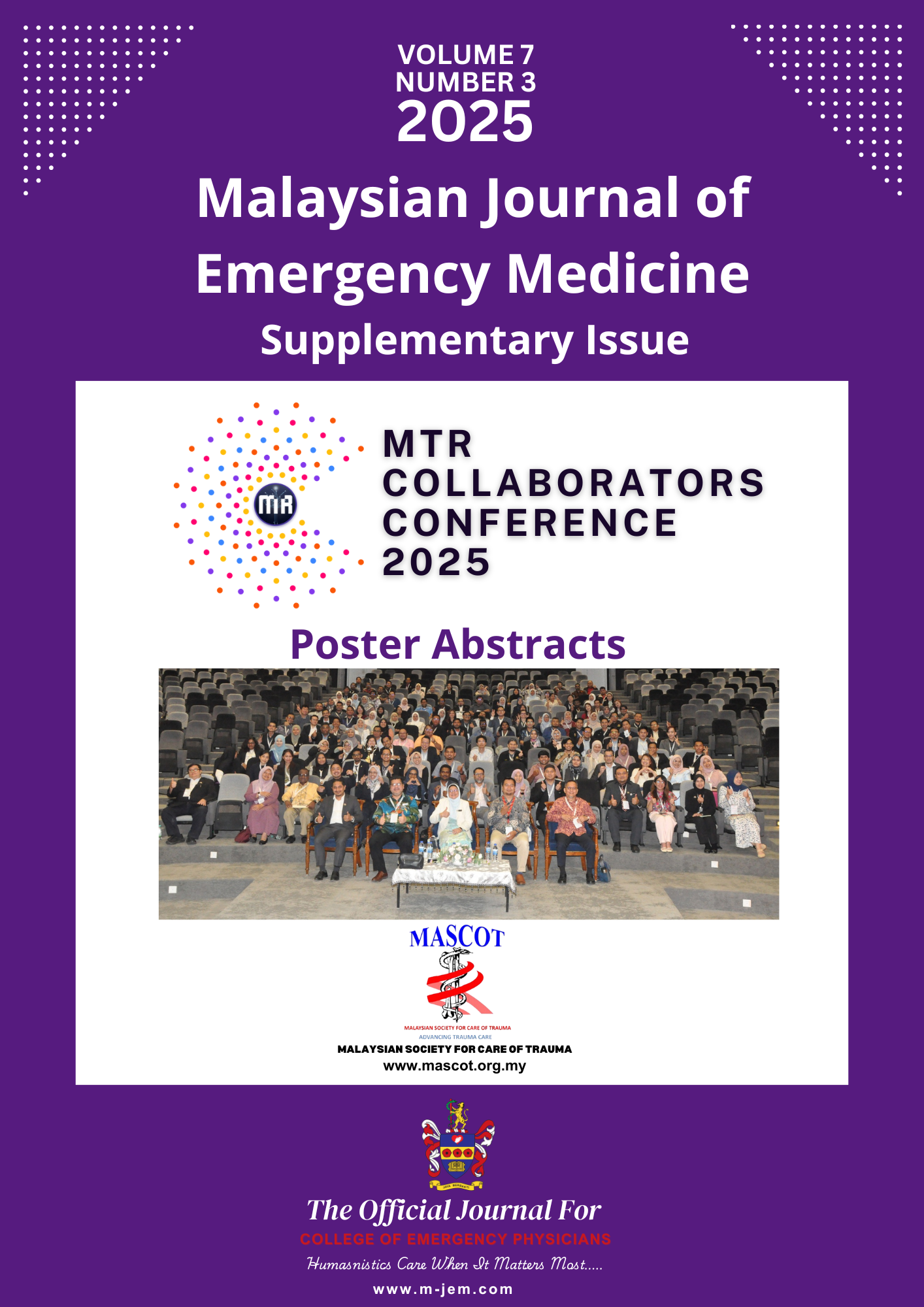A06 Managing 4 Severe Burn Injury Patients In Red Zone Under Mass Casualty Incidence
Main Article Content
Abstract
INTRODUCTION
Mass casualty incidents (MCIs) are disasters, either man-made or natural, in which local management agencies and the healthcare system are overwhelmed. Burns can occur when the skin is exposed to heat sources, such as flames, flash burns, chemicals and electricity
CASE DESCRIPTION
On a Monday morning, a mass casualty incident involving a wood-burning stove explosion at a factory in Miri resulted in four patients sustaining severe burn injuries. The EMT team implemented START triage and identified all four as critical. Upon arrival at Hospital Miri, trauma activation was initiated, and the patients were received by a coordinated team of emergency physicians and medical officers. Three patients exhibited signs of airway compromise, including hoarseness and singed facial hair, necessitating early intubation. All patients suffered extensive second- and third-degree burns over the face and body, with one also presenting with intracranial bleeding. Comprehensive trauma care was provided, including primary and secondary surveys, fluid resuscitation guided by the Parkland formula, and burn wound management under sedation. Additional interventions included administration of tetanus toxoid, tranexamic acid, and antibiotics. Following ICU admission and stabilization, one patient was transferred to a specialized burn unit. All four patients were eventually discharged in stable condition after receiving critical care.
DISCUSSION
Mass casualty incidents (MCIs) involving hazardous materials present unique challenges. Effective preparation, strong leadership and appropriate manpower allocation are crucial in minimizing morbidity and mortality. Early trauma activation has been shown to have a fundamental impact on patients management especially in MCI with additional manpower from other departments. The MCI team leader plays crucial role to control the resuscitation zone, allocate the limited manpower and equipment according to need and priority. This case report describes the emergency response to a chemical factory explosion and highlights the importance of structured disaster management.
CONCLUSION AND IMPLICATIONS
Mass casualty incidents (MCIs) resulting in patients with chemical burn injuries present unique challenges. Burn management benefits from specialist skills, expert knowledge, and timely availability of specialist resources.
Metrics
Article Details

This work is licensed under a Creative Commons Attribution-NonCommercial 4.0 International License.

